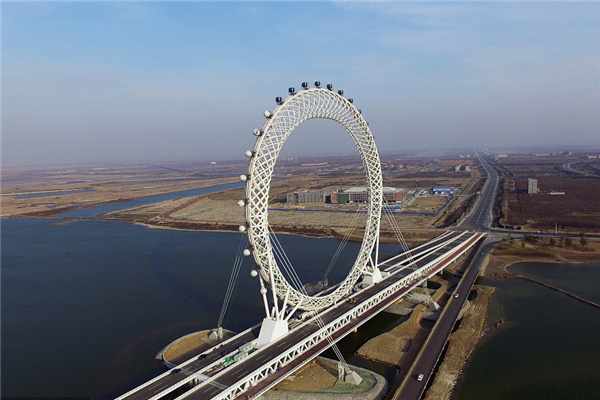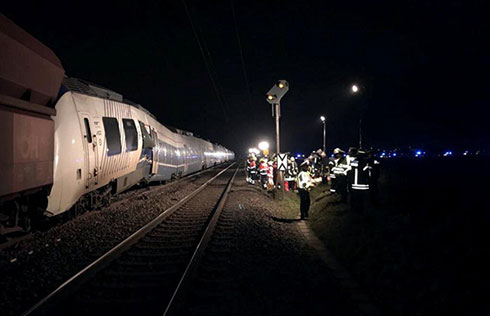

|
A row of terraced houses in Hoylake, United Kingdom. UK homebuilders that once rushed to build apartments are now trying to meet demand for private homes. Bloomberg News |
LONDON: Houses are making a comeback in the UK as buyers reject "little box" apartments and investor demand for rentals evaporates.
Single-family attached homes accounted for about 24 percent of all residences started in England in the first nine months, the highest proportion since 1992, according to the National House-Building Council. Semi-detached homes made up 17 percent of all starts, a level not seen since 1999.
"Most people dream of having a front garden and a back garden, with a little bit of security around them," said Alistair Leitch, finance director at Bellway Plc in Newcastle, England. "They don't want to have to park their car 50 yards from home."
UK homebuilders that once rushed to build flats are now trying to meet demand for private homes. The reversal is occurring as banks restrict lending to buy-to-let apartment investors. That helped push prices down by almost a quarter from the 2007 peak through March of this year, the most of any type of British residential property, according to the Nationwide Building Society, the country's biggest mortgage lender.
In the first nine months of this year, apartments accounted for around 40 percent of all starts in England, the least in six years, according to the House-Building Council, the UK's biggest insurer for new homes. About 60 percent of the properties Bellway plans to build next year will be houses, compared with just over 50 percent in the fiscal year through July, Leitch said. The company sold 4,380 homes in the year.
The proliferation in apartments was fueled by a government policy to emphasize high-density development on unused urban sites. The goal was to preserve the limited supply of undeveloped land while increasing the number of dwellings in England. In July 2007, the government announced a target of 3 million new homes by 2020.
The policy worked. As apartment blocks rose, detached houses fell to 12 percent of the total last year from 44 percent in 1997. The proportion of apartments rose to 51 percent from 15 percent in that period.
"The industry gets blamed for building little boxes, but we take our lead from the planners," Redrow Plc founder and Chairman Steve Morgan said. "The industry was guided by the government toward a high increase in density." The rules also created pent-up demand for family housing, he said.
A decade of soaring home prices, coupled with TV programs such as "Location, Location, Location" aimed at amateur property buyers, spurred a 19-fold increase in the buy-to-rent market to 190 billion pounds ($309 billion) from 1997 to 2007, said London-based property broker Savills Plc.
Investor demand
Investors helped spur development of high-rise apartment blocks in cities such as Birmingham and Leeds that outpaced demand. Leeds City Council said in April that about 13 percent of center apartments were empty, citing local tax returns.
"With investor demand largely gone, it's a question of selling new flats (apartments) to occupiers," the bulk of whom will be first-time buyers requiring larger mortgages, said Richard Donnell, director of research at London-based property research company Hometrack Ltd.
Apartment prices dropped 22 percent from the peak through March to about 109,708 pounds, compared with a 16 percent decline for detached houses to 211,595 pounds, according to Nationwide. Apartments became "significantly harder to sell" through 2008, Peter Redfern, chief executive officer of house builder Taylor Wimpey Plc, said in an interview. Prices fell about 30 percent at the low point of the market earlier this year, twice as much as houses, he said.
In 2000, the price difference between a newly built apartment and its resale value was 55 percent, according to Hometrack. That new-build premium has now vanished for apartments, while it remains at about 15 percent for new houses.
To reduce risk, builders are focusing on houses and smaller developments that require less investment upfront.
Lenders and new government policies are also helping promote house construction. In April 2007, the government created new zoning guidance to promote a greater mixture of housing types, sizes and values, easing some of the emphasis on higher density.
Barclays Plc, Britain's second-largest lender, is now offering five-year fixed-rate mortgages at 5.49 percent with a 30 percent down payment. That compares with 6.39 percent and a 40 percent down payment for a buy-to-rent investor.
"We have reformed the planning system to help local authorities deliver more and better homes," Communities and Local Government, the department responsible for planning, said in an e-mail. "Changes to the planning policy in 2007 require councils to do more to ensure the right mix of housing is built."
Taylor Wimpey, the UK's second-largest homebuilder by volume, got around 40 percent of its sales from apartments at the top of the market in 2007. About 23 percent of its land is now slated for flats. The company sold 4,702 properties in the UK in the first half of this year.
Clover Bank, a 23-house Taylor Wimpey development near Birmingham in central England, has almost sold out since the first unit was purchased in February. Two properties remained as of Nov 17, according to the company.
That contrasts with its Latitude project, a 189-apartment block about 13 miles away. A total of 67 apartments, first marketed in 2006, were still for sale, the development's estate agents Knight Frank LLP said last month. Construction was temporarily halted after the property market stalled before the work was completed earlier this year.
Bloomberg News
(China Daily 12/14/2009 page11)













